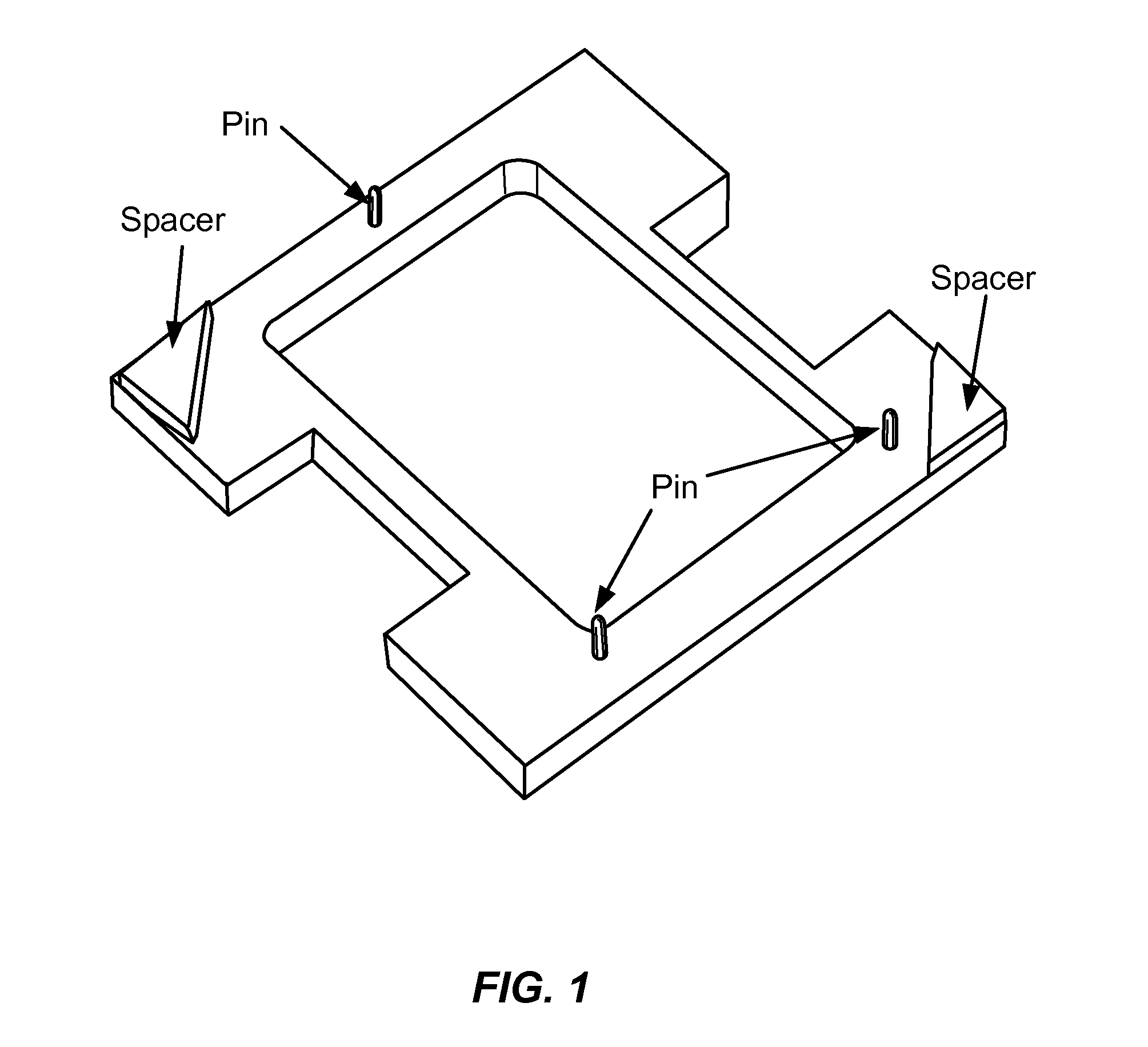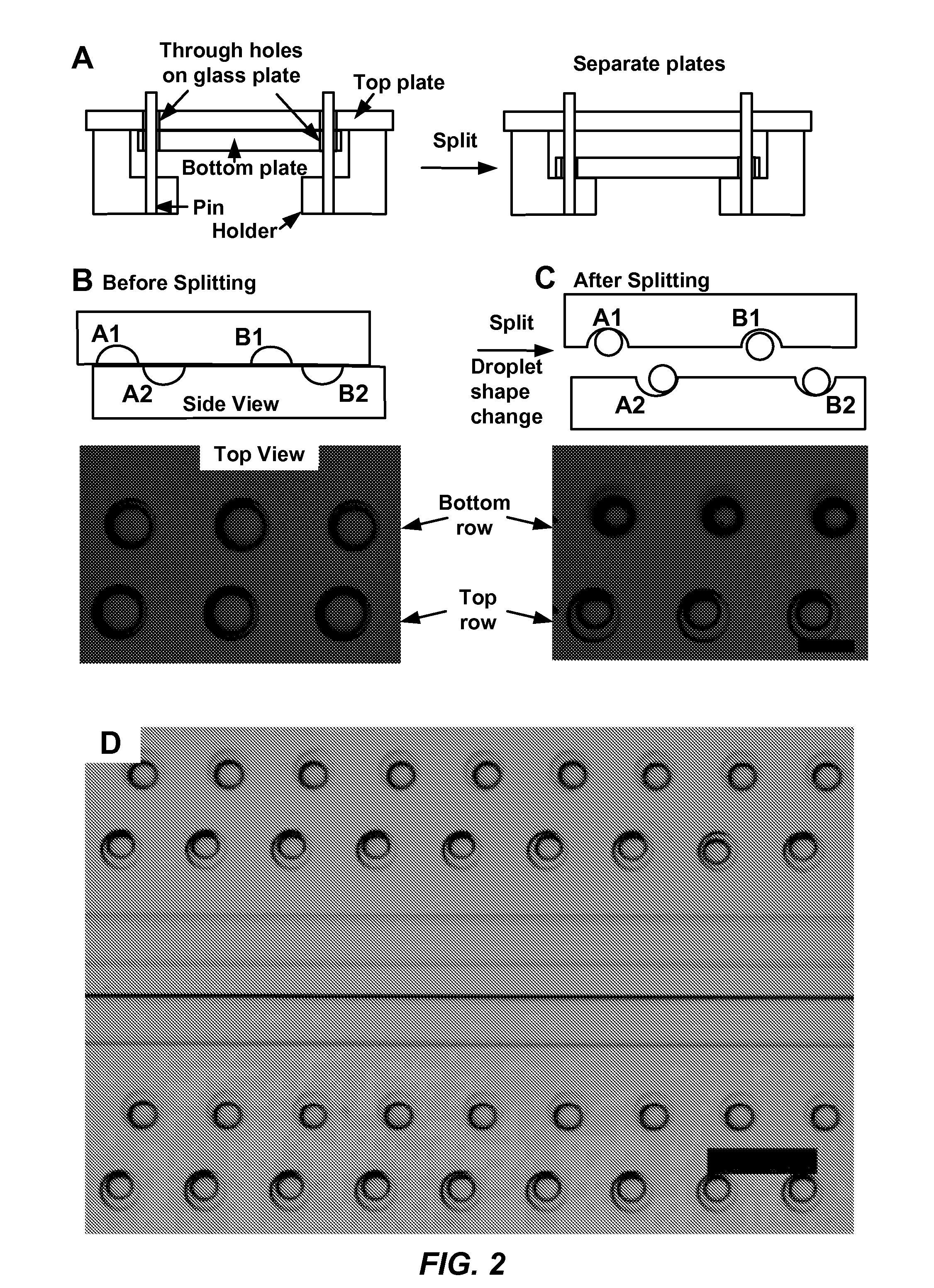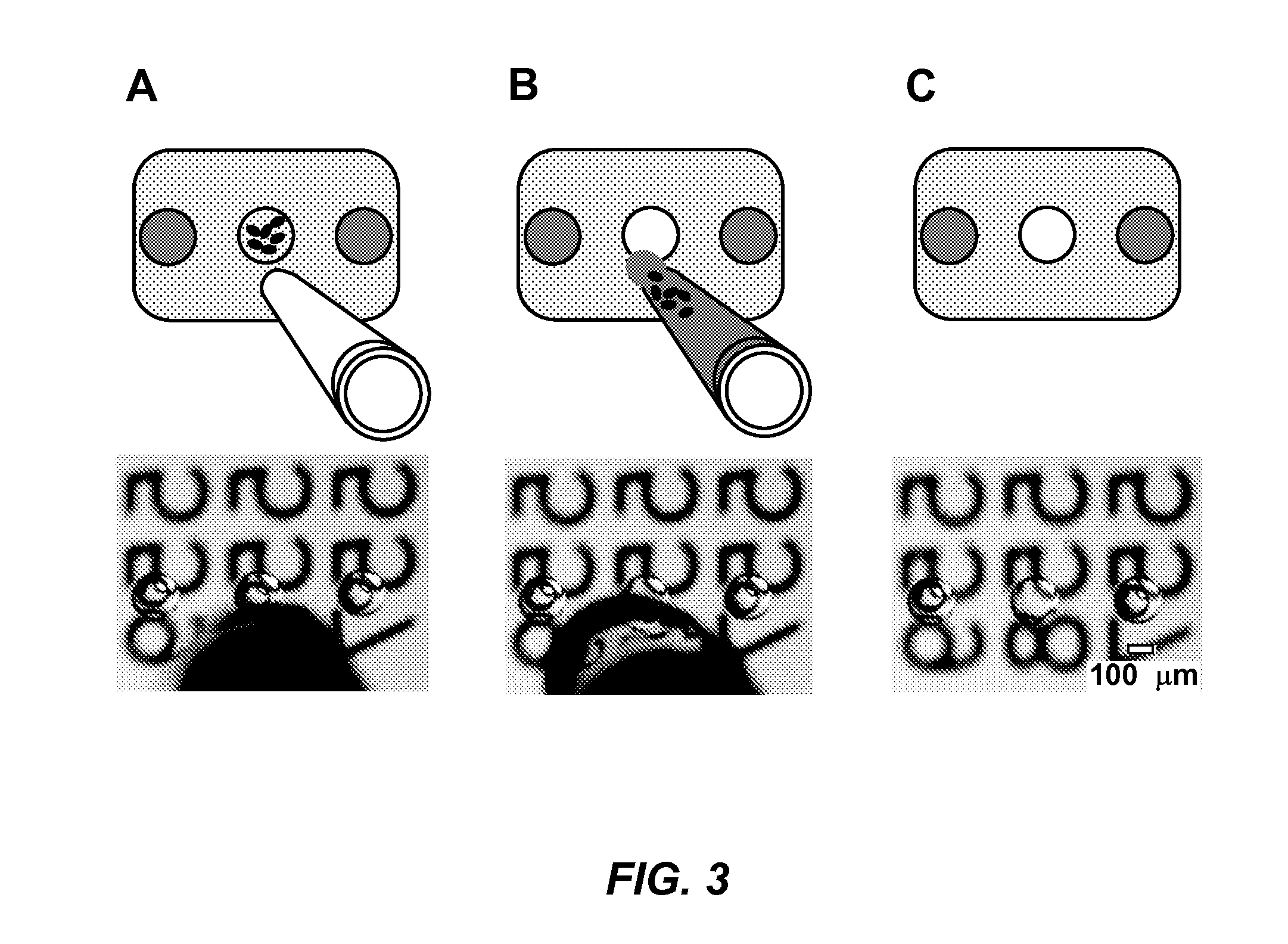Parallelized sample handling
a sample and parallel technology, applied in the field of parallel sample handling, can solve the problems of complex operation, limited use of biological assays in the real world, and equipment needed for these methods are often not accessible to most laboratories
- Summary
- Abstract
- Description
- Claims
- Application Information
AI Technical Summary
Benefits of technology
Problems solved by technology
Method used
Image
Examples
example 1
Gas Control for B. Theta
[0163]SlipChip devices with wells for cell culture were fabricated with a glass substrate. Bacteroides thetaiotaomicron B. theta) and Cooked Meat Medium cell culture medium were loaded onto the devices inside an anaerobic chamber. The devices were sealed and removed for imaging, then returned to the chamber for incubation. Devices were incubated for 8 hours at 37° C. B. theta cells grew to a dense micro-colony (FIG. 7).
example 2
Gas Control Via Nanoposts for E. coli
[0164]SlipChip devices with chambers for cell culture were fabricated (FIG. 8A B). Sub-micron scale nano-posts (FIG. 8C) were fabricated on some devices by immersion in diluted buffered hydrofluoric acid (HF). A fluorescently labeled strain of E. coli was loaded on devices with no nanoposts, 400 nm nanoposts, and 900 nm nanoposts, respectively (FIG. 8D F), and integrated fluorescence intensity was used to quantify growth. In this particular model system, the growth of E. coli was limited by the supply of oxygen. By tuning the gap between the two glass plates and thus controlling the gas exchange through the oil phase, a more uniform growth of E. coli was achieved.
example 3
Gas Control Via Sealed Vessel
[0165]SlipChip devices containing 1600 wells with 6 nL per well were designed and fabricated so to fit into 100-mL Corning glass bottles (FIG. 9A B). Devices were loaded with cells and medium, placed in bottles, and gas mixtures with varying amounts of oxygen (O %, 1%, and 3% O2) were injected into the bottles. Two model microorganisms were cultivated in this setup. A strict anaerobe species, B. theta was cultivated to test for the presence of oxygen in the anoxic bottle. The growth of B. theta in the 0% oxygen bottle (FIG. 9C, first column of top row) confirmed that the vessel is well sealed. B. theta was not able to grow when oxygen was injected. As a positive control, E. faecalis was grown under these three conditions (FIG. 9C, bottom row). E. faecalis grew under all three conditions.
PUM
| Property | Measurement | Unit |
|---|---|---|
| Volume | aaaaa | aaaaa |
| Volume | aaaaa | aaaaa |
| Temperature | aaaaa | aaaaa |
Abstract
Description
Claims
Application Information
 Login to View More
Login to View More - R&D
- Intellectual Property
- Life Sciences
- Materials
- Tech Scout
- Unparalleled Data Quality
- Higher Quality Content
- 60% Fewer Hallucinations
Browse by: Latest US Patents, China's latest patents, Technical Efficacy Thesaurus, Application Domain, Technology Topic, Popular Technical Reports.
© 2025 PatSnap. All rights reserved.Legal|Privacy policy|Modern Slavery Act Transparency Statement|Sitemap|About US| Contact US: help@patsnap.com



